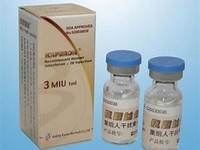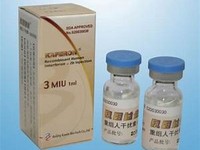Dasatinib

Dasatinib
CLINICAL USE
Chronic myeloid leukaemia (CML) in patients who have resistance or intolerance to previous therapy, including imatinibPhiladelphia chromosome-positive acute lymphoblastic leukaemia in adults who are resistant to or intolerant of prior therapyDOSE IN NORMAL RENAL FUNCTION
Chronic CML: 100 mg once daily All other indications: 70 mg twice daily; dose can be increased in 20 mg steps. Maximum: 140 mg once daily in patients with chronic phase CML, and up to 100 mg twice daily in advanced phase or with ALLPHARMACOKINETICS
DOSE IN RENAL IMPAIRMENT
GFR (mL/MIN)
DOSE IN PATIENTS UNDERGOING RENAL REPLACEMENT THERAPIES
IMPORTANT DRUG INTERACTIONS
Potentially hazardous interactions with other drugsAntibacterials: metabolism accelerated by rifampicin –avoid concomitant useAntipsychotics: avoid concomitant use with clozapine, increased risk of agranulocytosisADMINISTRATION
Reconstition
–Route
OralRate of Administration
–Comments
–OTHER INFORMATION
No studies have been done with dasatinib in renal impairment but due to the low renal excretion there is unlikely to be a reduction in clearanceExtensively metabolised in humans with multiple enzymes involved in the generation of the metabolites – CYP3A4 is a major enzyme. In healthy subjects administered 100 mg of [14 C]-labelled dasatinib, unchanged dasatinib represented 29% of circulating radioactivity in plasma. Plasma concentration and measured in vitro activity indicate that metabolites are unlikely to play a major role in the observed pharmacology of the productElimination is predominantly in the faeces, mostly as metabolites. Following a single oral dose of [14 C]-labelled dasatinib, approximately 89% of the dose was eliminated within 10 days, with 4% and 85% of the radioactivity recovered in the urine and faeces, respectively. Unchanged dasatinib accounted for 0.1% and 19% of the dose in urine and faeces, respectively, with the remainder of the dose as metabolitesMost common adverse effects of dasatinib include fluid retention, gastrointestinal disturbances, and bleeding. Fluid retention may be severe, and can result in pleural and pericardial effusion, pulmonary oedema and ascites
See how to identify renal failure stages according to GFR calculation
See how to diagnose irreversible renal disease
Home


.JPG)





